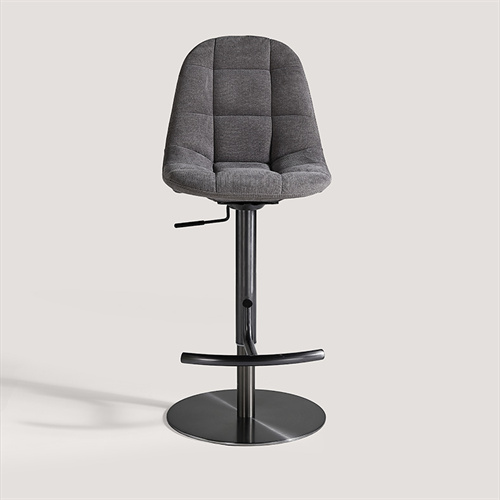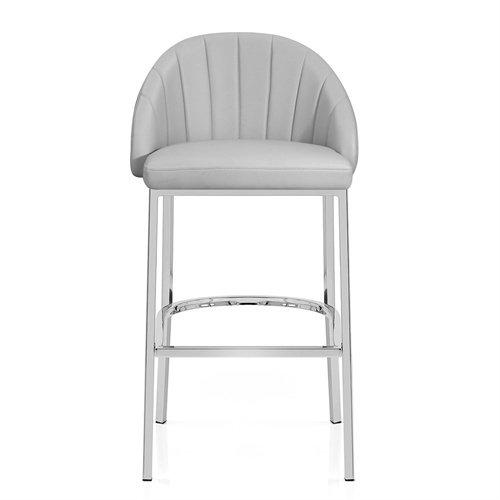Bar chairs have evolved from simple seating options to stylish and functional pieces that enhance the aesthetic and utility of living spaces. They serve as versatile furniture that can adapt to various settings within the home, particularly in the living room, where they can provide additional seating and contribute to the overall design theme. This article explores the different styles of living room bar chairs, their functional benefits, and tips for integrating them into your home decor.
The Evolution of Bar Chairs
Historical Context
Bar chairs originated in taverns and bars as high seating options for patrons. Over time, they transitioned into residential spaces, particularly in kitchens and dining areas. Today, bar chairs are not only functional but also serve as design statements that reflect personal style.
Modern Design Trends
In recent years, bar chairs have embraced contemporary design trends. They are available in various styles, materials, and finishes, making them suitable for diverse interior designs—from minimalist to eclectic. The rise of open-plan living has further popularized bar chairs as flexible seating solutions.
Choosing the Right Bar Chair
Considerations for Selection
When selecting a bar chair for your living room, several factors should be considered:
Height: Ensure that the chair's height is appropriate for your counter or bar area. Standard bar stools typically range from 28 to 32 inches in height.
Material: Choose materials that complement your existing decor. Options include wood, metal, plastic, and upholstered variants.
Style: Decide on a style that fits your aesthetic—modern, industrial, traditional, or mid-century modern.
Functionality: Consider whether you need features like swivel capabilities or backrests for added comfort.
4723.jpg)
Popular Styles of Bar Chairs
Different styles of bar chairs can dramatically influence the ambiance of your living room:
Modern: Characterized by sleek lines and minimalist designs often made from metal or acrylic.
Industrial: Features raw materials like distressed wood and exposed metal for a vintage feel.
Traditional: Classic designs typically made from wood with upholstered seats.
Mid-Century Modern: Known for tapered legs and curved backs, offering a retro vibe.
Farmhouse: Rustic charm with distressed finishes that add warmth.
Functional Benefits of Bar Chairs
Space Efficiency
Bar chairs are ideal for maximizing space in smaller living areas. Their compact design allows them to fit neatly under counters or bars, making them perfect for open-plan layouts where space is at a premium. This space-saving quality enables homeowners to accommodate more guests without overcrowding their living areas.
Aesthetic Enhancement
Beyond functionality, bar chairs significantly enhance the visual appeal of a room. With an array of designs available, they can seamlessly integrate into various decor styles—from rustic to contemporary—serving as focal points or accent pieces in your living room.
Versatility in Use
Bar chairs are not limited to dining or kitchen use; they can also serve multiple purposes throughout the home:
Casual Dining: Perfect for quick meals at a breakfast bar or kitchen island.
Workstation: Ideal for setting up a casual workspace where you can work on a laptop.
Reading Nook: Create a cozy corner with a bar chair paired with a side table for reading.
Extra Seating: Provides additional seating during gatherings without requiring much space.

Promotion of Social Interaction
The height and arrangement of bar chairs encourage social interaction. When placed around a kitchen island or home bar, they create an inviting atmosphere where family and friends can gather, converse, and enjoy each other's company.
Styling Your Living Room with Bar Chairs
Creating Cohesion with Existing Decor
To ensure that your bar chairs complement your living room decor:
Color Palette: Choose colors that harmonize with your existing furniture. Neutral tones can blend well with most color schemes while bold colors can make a statement.
Material Matching: Align the materials of your bar chairs with other furniture pieces—such as matching wooden finishes or metal accents—to create visual continuity.
Layering Textures: Incorporate different textures by pairing upholstered bar stools with leather sofas or wooden tables to add depth to your design.
Mixing Styles Effectively
Mixing different furniture styles can create an eclectic yet cohesive look:
Balance Proportions: Ensure that the scale of your bar chairs complements other furniture in the room. Avoid oversized chairs in small spaces which may overwhelm the area.
Highlighting Features: Use accessories like cushions or throws on bar chairs to tie them into the overall decor theme while adding comfort.
Seasonal Decor Adjustments
Bar chairs can be easily updated with seasonal decor changes:
Cushion Covers: Swap out cushion covers on upholstered bar stools to reflect seasonal colors or patterns.
Decorative Accents: Add small decorative items on nearby surfaces to enhance the overall aesthetic without overwhelming the space.
5250.jpg)
Maintenance Tips for Bar Chairs
Maintaining the appearance and functionality of your bar chairs is essential for longevity:
Regular Cleaning: Dust and clean surfaces regularly to prevent dirt buildup. Use appropriate cleaners based on material (e.g., wood polish for wooden chairs).
Upholstery Care: For upholstered options, follow care instructions specific to the fabric type to avoid stains and wear.
Check Stability: Periodically check screws and joints to ensure stability and safety when using the chairs.
Conclusion
Living room bar chairs are more than just functional seating; they represent an opportunity to enhance both style and functionality within your home. By carefully selecting styles that align with your decor, considering their versatile uses, and maintaining them properly, you can create an inviting atmosphere that encourages social interaction while reflecting your personal taste. Whether you prefer modern minimalism or rustic charm, there is a perfect bar chair waiting to elevate your living space.





0723.jpg)